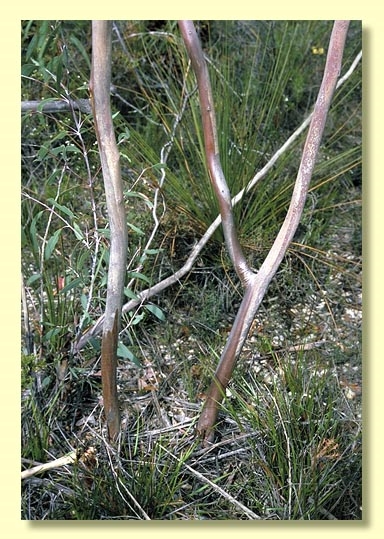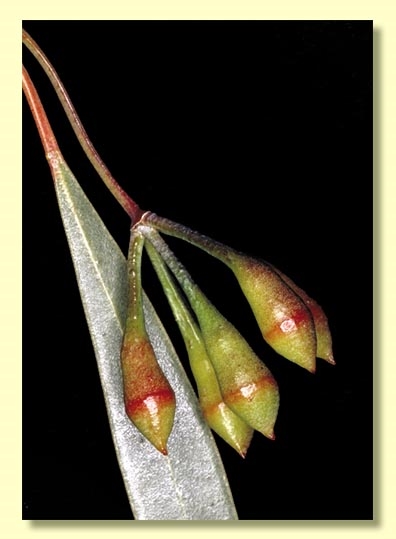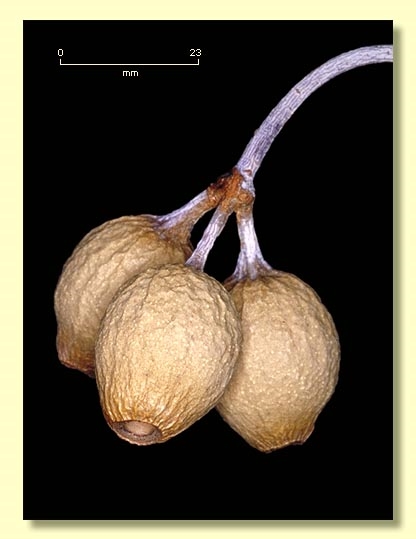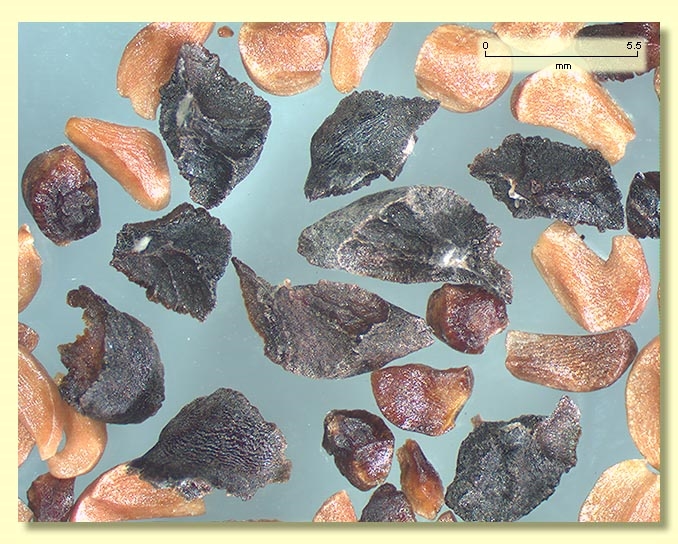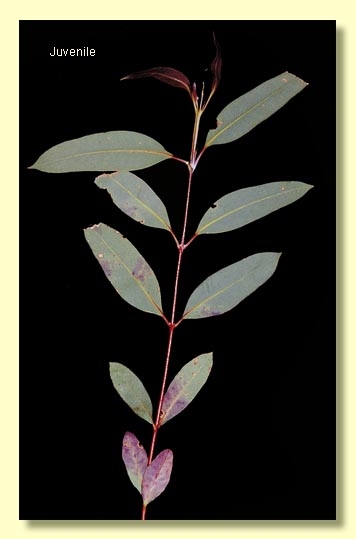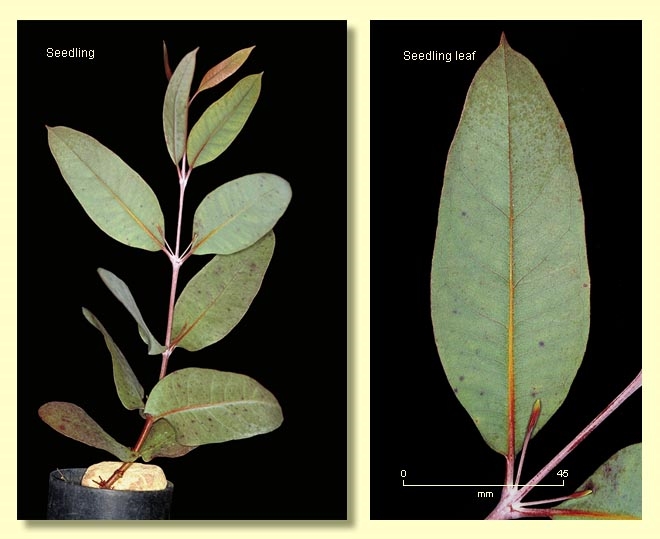Euclid - Online edition
Eucalyptus sepulcralis
Eucalyptus | Eucalyptus | Longistylus | Frutices | Muricatae
T: near Thomas R., W.A., C.Taylor s.n.; holo: MEL.
Bark smooth, grey over pinkish grey.
Branchlets initially very glaucous but ageing smooth, glistening and reddish; lacking oil glands in the pith.
Juvenile growth (coppice or field seedlings to 50 cm): stems rounded in cross-section, glaucous; juvenile leaves opposite for at least 10 nodes, soon petiolate (only lowest pair sessile), elliptic to ovate-lanceolate, 6–10 cm long, 1.5–3 cm wide, dull, bluish green to green.
Adult leaves alternate, petioles 0.8–2.5 cm long; blade narrowly elliptical to narrowly lanceolate, 5–11.5 cm long, 0.8–1.3 cm wide, base and apex both attenuate, margin entire, concolorous, glossy, green, side-veins greater than 45° to midrib, reticulation moderate to dense, intramarginal vein more or less close to margin, oil glands obscure.
Inflorescence axillary unbranched, peduncles 2.3–4.5 cm long, buds 7 per umbel, pedicels 0.7–1.4 cm long. Mature buds slenderly pyriform to obovoid, glossy when fresh but drying glaucous, 1.2–1.7 cm long, 0.5–0.9 cm wide, scar absent, hypanthium waisted, operculum conical or rarely beaked, stamens inflexed, anthers oblong to reniform, versatile, dorsifixed, dehiscing by curved, oblique to longitudinal separate slits, style long and straight, stigma blunt, locules 3 or 4, the placentae each with 2 vertical rows of ovules. Flowers pale yellow.
Fruit pedicels 0.7–1.4 cm long, barrell-shaped to urceolate, 2–2.5 cm wide, orifice small, disc descending, valves 3 or 4, enclosed.
Seeds blackish, 3.5–8 mm long, obliquely pyramidal, dorsal surface smooth, curved to meet terminal hilum, ventrally ridged.
Cultivated seedlings (measured at ca node 10): cotyledons reniform; stems rounded in cross-section to flattened, glaucous; leaves sessile, opposite, amplexicaul, discolorous, oblong-elliptic for ca 4 nodes then becoming petiolate, remaining opposite for ca 10 nodes, concolorous, elliptic to lanceolate with tapering to truncate base, 8–12.5 cm long, 2.5–4.5 cm wide, dull, grey-green
Flowering has been recorded in January, November and December.
A small tree or mallee endemic to Western Australia. It has a very restricted distribution in heathlands in the eastern part of the Fitzgerald River National Park, west of Hopetoun. The stems are always emergent well above the surrounding heath, slender and smooth, the branchlets pendulous, crown sparse, the adult leaves glossy green and the fruit urn-shaped and pendulous.
Eucalyptus sepulcralis belongs in Eucalyptus subgenus Eucalyptus series Muricatae, a group characterised by smooth bark, buds with a single operculum (hence no operculum scar), oblong to reniform anthers that shed pollen by two more or less oblique slits that are not confluent apically, ovules arranged in two rows on the placenta, pyramidal seeds, non-ribbed fruit and seedling leaves opposite for up to ca 10 nodes.
E. sepulcralis is closely related to two other species, E. pendens from near Badgingarra, which has the habit of E. sepulcralis, and smaller buds and fruits, and to E. exilis from Boyagin Rock, near Bindoon and near Mt Lesueur, which is a smaller mallee with a more compact crown, and has smaller buds and fruit.


